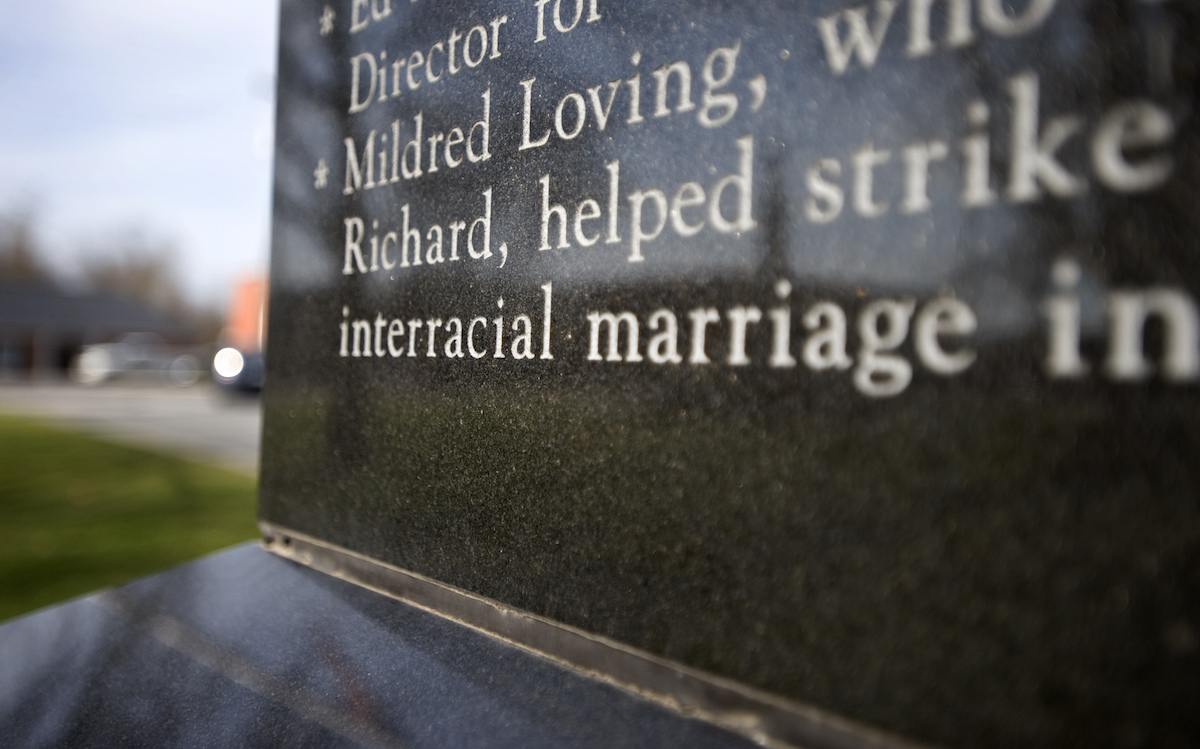
Mildred Jeter and Richard Loving had known each other for years in isolated Central Point, Va., where they both grew up. He knew her as ‘Bean’ (short for ‘String Bean’), she knew he was a few years older than her and eventually they fell in love. But Mildred was African American and Native American while Richard was white, and their marriage would eventually be the catalyst for the legalization of interracial marriage throughout the country after the Supreme Court, in Loving v. Virginia, found anti-miscegenation laws to be unconstitutional.
The “freedom to marry has long been recognized as one of the vital personal rights essential to the orderly pursuit of happiness,” the decision said.
Richard Loving told LIFE that they hadn’t tried to lead the national fight for justice. “[We] are not doing it just because somebody had to do it and we wanted to be the ones,” he said in 1966. “We are doing it for us — because we want to live here.”
These days, the anniversary of the June 12, 1967, decision is celebrated by many people as Loving Day, an invention of Ken Tanabe, a designer who felt a personal connection to the history.
“Mildred and Richard Loving were committed to each other despite the world being against them,” says Tanabe, who started a Loving Day celebration in 2004 for his thesis at the Parsons School of Design. “They went through nine years of court battles to get to where we are. Because of them, interracial marriage is legal for people like my parents — folks like myself might not exist if it wasn’t for the case.”
Get your history fix in one place: sign up for the weekly TIME History newsletter
The pivotal ruling reversed anti-miscegenation laws in 16 different states, and much like Obergefell v. Hodges did for same-sex marriage last summer, made it illegal to deprive the couples in question of marriage licenses — though some definitely tried.
“It’s not like it was a big ‘hooray’ moment,” Tanabe says. “There was plenty of resistance to the case.”
Tanabe says he conceived of Loving Day in honor of Mildred and Richard Loving because their story was “a really powerful way to tell the story of love and attitudes towards interracial marriage.”
Loving Day’s flagship celebration this year is in New York City on June 12, but people participate in the holiday across the world. After twelve years of grassroots celebration, organizers have started a White House petition for federal recognition of Loving Day. This year’s celebration will also be a marked with viewings of Jeff Nichols’ Loving, a film recounting Mildred and Richard’s story, which premiered at Cannes this year. In Virginia, the state in which lawmakers opposed the Lovings’ right to marry, there will be a free Richmond screening of a documentary about the couple to mark the civil-rights victory the Lovings won there.
More Must-Reads from TIME
- Donald Trump Is TIME's 2024 Person of the Year
- Why We Chose Trump as Person of the Year
- Is Intermittent Fasting Good or Bad for You?
- The 100 Must-Read Books of 2024
- The 20 Best Christmas TV Episodes
- Column: If Optimism Feels Ridiculous Now, Try Hope
- The Future of Climate Action Is Trade Policy
- Merle Bombardieri Is Helping People Make the Baby Decision
Write to Julia Zorthian at julia.zorthian@time.com